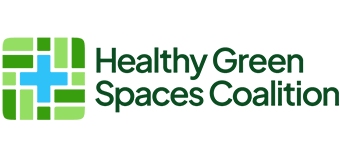Kelly Kopp
Professor, Water Conservation and Turfgrass.
Department of Plants, Soils and Climate
Utah State University
Focus Area: Landscape Water Use Efficiency
Kelly Kopp is a Professor of Plants, Soils & Climate and Director of Utah State University’s Center for Water Efficient Landscaping. Her 25+ year career has been dedicated to researching landscape water conservation methods, plant water use requirements, sustainable turfgrass management, and irrigation technologies. She shares the results of this work extensively throughout the country with the goal of optimizing landscape water use efficiency while maintaining the quality-of-life benefits associated with healthy green spaces.
Expert Q&A
You work extensively with the public. What is the question you are asked most often about landscape irrigation?
That’s an easy one. The question I’m asked most often is “How long should I irrigate?” And like any good academic, my response always starts with “It depends!” In all seriousness though, landscapes are complex systems that include biological components (plants, animals, insects), mechanical components (irrigation controllers and sprinklers), and structural components (soils, hardscaping, mulches, pavers, edging). In addition, the local climate must also be considered because of how it effects the entire system and plant water requirements.
As I’m coming to an answer to this question, I also have to ask more questions. For example, what type of sprinklers do you have? Are they overhead spray? Rotors? Drip? Some combination of all of the above? Knowing what type of irrigation is being applied does help me give a reasonable timeframe in answer to this question. For example, we know that overhead spray sprinklers apply somewhere close to 1.5” of water per hour. If I’m recommending applying 0.5” of water with each irrigation, that means it will take approximately 20 minutes to apply 0.5” of water. Of course, nothing beats an onsite irrigation audit, so I also try to connect people with local resources for that as well.
Is there a question you get asked the second most?
Yes! The second most asked question is usually “What type of grass should I plant?” And I have to follow this one up with more questions as well. It’s really a bit like detective work because there are so many things to consider when choosing a turfgrass species or variety. For example, how much traffic will the area receive? What is the exposure? North, south, east, west? Do you have an inground irrigation system? Do you drag a hose around your yard? Does the area have a slope? What is the soil like? What sort of maintenance practices are you willing to do? Can you fertilize? Mow regularly? Treat pests if needs be? All of these questions are important to consider when making a turfgrass recommendation.
The really fun thing about it (at least for me 😉 is that there are so many turfgrass options these days. We’re able to customize a recommendation based on individual needs and expectations. Of course, I’m always thinking about water as well and so will make the best recommendation I can that also includes the most efficient use of water.
You’ve been conducting research on landscape water use efficiency for quite some time. What are the biggest changes technological advancements you’ve seen?
The first major technological advancement that came along and really got my attention was the weather-based irrigation controller. What a gamechanger! We’d spent so many years trying to help folks schedule their own irrigation appropriately and this new tool took all the guess work out of the process. I’ve evaluated several of these types of controllers in my research over the years and they have huge potential for achieving real water savings. Of course, there is still the challenge of programming these controllers correctly, but we’ve developed support for this as well.
In addition to weather-based controllers, I’d say that multi-stream, multi-trajectory (MSMT) sprinkler nozzles were another big advancement. These nozzles changed the way that irrigation water is applied both in terms of speed and water droplet size and the improvements in application efficiency have been incredibly impressive. I’ve been running a large-scale irrigation auditing program for many years, and I can tell you that where typical overhead spray sprinklers have distribution uniformities in the range of 55-60% (on average), we’re now seeing distribution uniformities closer to 80% and sometimes even 90% with MSMT nozzles.
The last technological advancement I’ll mention has been the development of low water use turfgrass varieties. Turfgrass breeders have always focused on improving different characteristics like traffic tolerance, green color, or disease resistance, but in recent decades they’ve really turned their attention to reducing water requirements and they’ve been very successful. As a result, we now have varieties of commonly used species like Kentucky bluegrass, tall fescue, and perennial ryegrass that have significantly lower water requirements (at least 30% lower) than standard varieties.
Speaking of your large-scale irrigation auditing program, what does that program look like and do your participants actually save water?
Our program is called the Water Check Program and we’ve been conducting audits for over 20 years at this point. It’s a fairly time intensive process that includes a landscape and irrigation system walkthrough, distribution uniformity testing, and soil sampling for both texture and plant root depth. We collect all our data on a tablet-based app and then generate a customized irrigation schedule based on the participant’s irrigation system and location.
After thousands and thousands of “Checks”, I’m proud to say that our participants reduce their water use by 20-30% and that that savings goes on for years after participation. It’s a huge amount of water savings and it doesn’t require changing anything in the landscape except for fixing irrigation system problems. It’s made me wonder why the water and utility industries jumped so quickly into landscape transformation programs when there is so much savings to be realized without making huge changes? Changing someone’s landscape doesn’t magically make them a good irrigator, and that’s where we come in. Our program is heavy on education, and we make sure our participants do become good irrigators.
What is a surprising research finding you’ve had and can share?
There are actually two that I’d like to share. The first was research our turfgrass team conducted in 2021. We were in a really severe drought at the time and wanted to see exactly how far we could push a standard Kentucky bluegrass lawn in terms of limiting irrigation. We had three experimental irrigation treatments. The plots either received 0.25” of irrigation per month, 0.5” of irrigation per month, or 1” of irrigation per month.
In all cases, the irrigation was applied on a single day during each month of the growing season. All of the grass went dormant in the heat of the summer (perfectly normal response for a cool-season grass) as you might expect. However, as the weather began to cool into fall, all of the treatments recovered and reached acceptable levels of green cover including the plots that only received 0.25” of irrigation per month. It was a striking demonstration of just how tough and resilient Kentucky bluegrass is and really countered some of the narrative I hear “out there” about it being a water hog.
Another (sort of) surprising research finding came from the work of a graduate student in my department who looked at daytime vs. nighttime watering of turfgrass and annual flowers. The findings were somewhat surprising because of the standard recommendation to irrigate at night, or at least not during the day, to prevent water losses due to evaporation.
As it turned out, irrigation losses were greater during the day because wind drift not evaporation. Also, evapotranspiration losses were actually higher when irrigation was applied at night. The take-home message was that irrigation should be applied when conditions are least windy, even if that means irrigating during the hottest part of the day.









